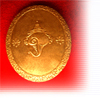 |
Personalities Ponniah Pillai [b 1804] |
 |
Among
the genius of Swathi Thirunal’s court were the four brothers
Chinnayya [b. 1802], Ponnayya [b. 1804], Sivanandam [b. 1808] and
Vadivelu [b 1810] known as the Tanjavur Quartette (Nalvar). Ponniah
is the second one of the famous Thanjavoor quartette. His youngest
brother Vadivelu was the most famous musician in Swathi Thirunal’s
court. |
Compositios of Ponnayya:
[Thillana]
Thodi
[Thiallana]
Sankarabharanam, Adi
[Thillana]
Hindusthani Bihag M.Chapu
Amba neelambari
Nilambari Adi
Athimoham [Varnam]
Sankarabharanam Adi
Kanakangi Pai
Gaula Adi
Keliyugamuna Sahana
M.Chapu
Mahadeva manohari
Devamanohari Rupaka
Manavi kai konarda [Varnam]
Sankarabharanam Adi
Mangala pradambuichu
Madhyamavathi Rupaka
Mayatita
Mayamalavagaula Rupaka
Neesati dora [Varnam]
Bhairavi Rupaka
Ninu sareku nammiti
Madhyamavathi Rupaka
Nivantisamini [Varnam]
Kamalamanohari Adi
Paramakalyani[Varnam]
Bhairavi Rupaka
Raghunatha nannu
Shivaranjini Adi
Ranganathude
Sourashtra Rupaka
Sakhiye inda [Varnam]
Anandabhairavi Adi
Samiga natho [Varnam]
Manohari Adi
Samini pai [Varnam]
Kedaragaula Ata
SaminiRammanave[Varnam]
Bhairavi Adi
Sarojakshiro [Swarajathi]
Yadukula kambhoji
Sri guruguha murthi
Dhenuka Rupaka
Srikara Sugunakara
Sabdam
Valachi vachchiyunna
Sourashtra Ata
? Kapi Padavarnam
? Khamas Padavarnam
? Navaratna varnamalika
Sarabhendra Bhupalakurvanji
Nadanamakriya, Ahiri etc

